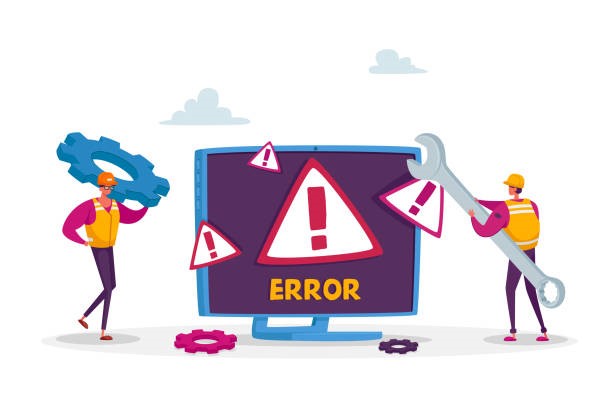The Cost of Network Downtime
The Cost of Network Downtime
Downtime costs $5,600 p/minute, which adds up to well over $300K p/hour
Every organization is concerned with cutting costs, but the true cost of network outages is often overlooked. The overall cost of lost productivity lost revenue, and intangible costs associated with network outage is the cost of network downtime.
Consider how much it will cost you to get your network up and running, as well as how much you will lose if it down.
It is all too easy for technology to go to the bottom of the priority list when there are so many other costs and concerns vying for your attention. IT downtime can have a direct impact on your bottom line and continuing business operations if your network or applications fail or crash suddenly. In extreme cases, unplanned outages can force a company out of business, resulting in data and financial losses.
What is Network Downtime?
The computer network of your company governs interactions between the various devices and digital platforms that help run your business, such as desktops, laptops, phones, smart appliances, company websites or servers, and so on. Your network enables these devices and platforms to communicate and connect to the internet.
When this digital network shuts down or becomes unavailable for use, this is referred to as network downtime. Downtime can be scheduled or unscheduled.
When your IT team needs to make critical technological updates, they may have to temporarily turn off your network. By planning ahead of time, your IT team can schedule the outage at a time that is convenient for your organization, such as after business hours.
We are talking about unplanned network disruptions when we talk about the implications and costs of network downtime. Unplanned network downtime can be a financial strain on your company, but it can also signify major IT difficulties, such as a cyberattack.
The Cost of Network Downtime
The average cost of IT downtime in the industry is determined by a variety of factors. The monetary losses vary depending on your revenue, industry, the length of the outage, the number of people affected, the time of day, and so on. For example, losses per hour are significantly higher for businesses based on high-level data transactions, such as banks and online retail sales. If you have an unplanned outage during peak traffic hours, the consequences will be far-reaching.
According to a Gartner study published in 2014, the average cost of IT downtime is $5,600 per minute. Because there are so many differences in how businesses operate, downtime can cost as much as $140,000 per hour on the low end, $300,000 per hour on average, and $540,000 per hour on the high end. In addition, by a more recent report (from the Ponemon Institute in 2016 ), raises Gartner’s average from $5,600 per minute to nearly $9,000 per minute.
However, there are numerous formulas available to calculate the one-of-a-kind cost of network downtime. For example, you can use the IT downtime formula below to calculate the cost of your company’s downtime:
Downtime cost = minutes of downtime x cost-per-minute.
The most common causes of network downtime
To avoid network downtime, you must first understand what causes it. There are four major causes of network Downtime:
Human error:
According to recent statistics, human errors account for nearly half of all IT downtime, making them the most common threat to your network. It is unsurprising given that human errors are unavoidable. Accidentally shutting down the network and pulling out the wrong cord are common causes that you can’t plan for, but you can reduce their frequency by establishing guidelines and standards that your employees must follow. Continuous training and feedback will assist your employees in reducing the number of potential errors and their severity.
IT department is understaffed:
If your IT staff is overburdened and you lack the resources to monitor the network around the clock, manage upgrades, and perform other necessary tasks, your network is vulnerable to network downtime.
You can hire more people if you have the resources. Another option is to hire a network operations center (NOC) to monitor your network 24 hours a day, seven days a week.
Hardware failure:
Another common cause of network downtime is equipment failure. This could be due to low-quality technology or poor care and maintenance.
Overheating server hardware, even recently upgraded server hardware, can cause it to shut down. Without constant air conditioning to keep the equipment cool, technology can overheat. Interruptions from a power source can also cause network outages. Typical hardware failures include:
- The hard drive’s storage capacity has been reached.
- Firmware deterioration
- Viruses
- Overheating
- Internal and mechanical failure
Cybersecurity dangers:
It is worth noting that cybersecurity breaches have increased in recent years. Cybersecurity threats are a real threat to your company these days. Hackers and cyberterrorists are constantly refining their methods and creating new threats.
A hacker could remain undetected in your network for days, if not weeks or months, if you do not carefully monitor your network and systems. The more time a criminal spends in your network, the more access they can gain and the more damage they can inflict.
To combat security breaches:
- Keep an eye on network devices. Unmonitored devices are typically the source of data leaks.
- Implement multi-factor authentication to ensure that only authorized users gain network access.
- You can use file encryption to protect your data and network from cyber-attacks.
- Security patches should be applied to the network on a regular basis.
- Keep your antivirus and malware software up to date.
- Use network-scanning tools to look for vulnerabilities such as open ports, bad scripts, and missing patches on PCs, routers, servers, firewalls, network appliances, system software, and applications.
Downtime on a network can be inconvenient and frustrating for any organization. Lost revenue and data due to network outages can harm not only your bottom line but also your relationships with customers and partners.
Troubleshooting issues and staying ahead of new issues and threats can be stressful and physically exhausting for your IT team. Collaborating with NOC as a Service, Monitoring and Security and Monitoring as a Service, which among their primary goals are eliminating system downtime. In addition, keeping software and security patches up to date, as well as fully staffing your IT and updating your network, all contribute significantly to lowering network downtime.
Author


